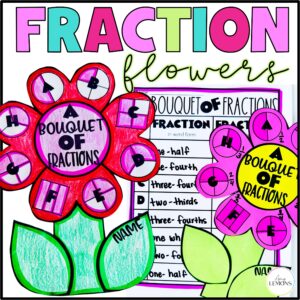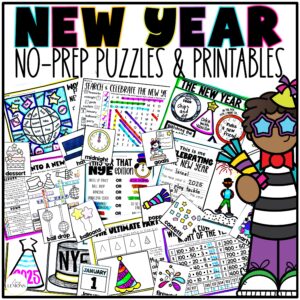

It’s no secret that visual aids help students better retain information, increase long-term understanding, and simplify complex information. What I love about using visual aids for math is how they guide students through problem-solving, making each step explicit. This is especially useful in math, where multi-step problems can be challenging.
Visual aids often involve interactive elements, like math manipulatives, that encourage students to engage actively with the lesson. Stickers are a wonderful option for hands-on learning opportunities that allow students to experiment with their work. Plus, they are highly engaging for elementary students!
Visual aids help turn abstract concepts into tangible and more easily understood elements. Stickers as visual aids provide a unique opportunity for students to practice and represent numbers or quantities for various math exercises.
For example, in the Comparing Numbers Hat activity above, students use dot stickers to represent numbers.
An extra benefit of using stickers in math is its use in positive reinforcement. Stickers can be seen as a reward and lead to increased confidence and motivation. And students need all the motivation they can get when it’s time to solve equations.
In addition and subtraction, stickers can be used to visually demonstrate problems using sticker number lines, or by removing/adding stickers as asked for in the equation.
In multiplication and division, stickers can show how multiplication is like repeated addition and division is like repeated subtraction. We can group or share stickers equally to help students understand how these elements work.
Stickers work well in understanding balanced expressions. A set of fun, colorful stickers makes the perfect manipulative for modeling equations and balancing expressions. Students can easily see how each side has an equal number of stickers—even though each number is different.
Visual aids can boost confidence because they provide immediate feedback. For example, using stickers to solve a math problem lets students see immediately if they have the correct answer or need to rework their math.
Solving word problems is tricky for students, so having this tool that allows students to see whether they’ve solved it correctly allows room to fix mistakes and learn from them more quickly.
As students go through the problem-solving process using stickers, they visualize the problems. This enhances their analytical skills as they learn to see different aspects of a problem and how they interconnect.
In our Dino Digs activity, students will use a “dino foot” craft to practice solving a word problem. You can use stickers to differentiate the word problems by having different students create different addition situations based on sticker type, i.e., color, shape, etc.
For example: “My dino has 5 pink spots. It has 4 blue spots. How many spots does it have in all? 5+4=9”
It really is that simple to turn ordinary math into a fun, hands-on learning experience! For more hands-on math activities, check out these unique ways to use linking cubes in the classroom.

Hey, y’all! My name is Amy Lemons and I am passionate about providing students with both engaging and effective standards-based Math and ELA lessons.

Sample a day of Rooted in Reading with these lesson plans and activities for Reading Comprehension, Vocabulary, and Grammar!


